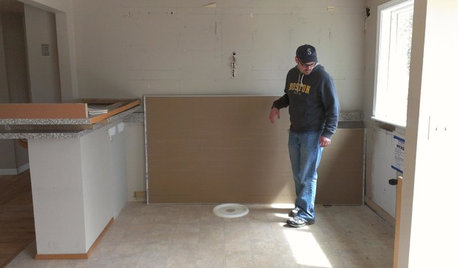Sawdust for my medium
oakleaf33
15 years ago
Related Stories

ARTWall Candy: Dish Up Colorful Glass Art Plates
These gorgeous handblown plates may look good enough to eat, but they're better off admired on the walls
Full Story
MATERIALSAn Architect Shares His Go-To Materials
Aluminum doors, porcelain tiles, polished concrete. Here are the features and finishes this professional returns to time and again
Full Story
DECORATING GUIDESThe Case for In-Between Colors
These mutable hues defy easy description, but their appeal all around the home isn't hard to get
Full Story
KITCHEN DESIGNStylish New Kitchen, Shoestring Budget: See the Process Start to Finish
For less than $13,000 total — and in 34 days — a hardworking family builds a kitchen to be proud of
Full Story
FIREPLACESUpdated Woodstoves Keep Home Fires Burning
Better technology means more efficiency than ever for modern woodstoves
Full Story
KITCHEN CABINETSChoosing New Cabinets? Here’s What to Know Before You Shop
Get the scoop on kitchen and bathroom cabinet materials and construction methods to understand your options
Full Story
LIFEHow to Outsmart Backyard Critters
Learn to think like a raccoon, skunk or squirrel to keep your home safe and your garden intact
Full Story
LIFEYou Showed Us: 20 Nutty Home Fixes
We made the call for your Band-Aid solutions around the house, and you delivered. Here's how you are making what's broken work again
Full Story
MOST POPULAR11 Nominees for the ‘She Shed’ Hall of Fame
These special sanctuaries let busy women get away from it all without leaving the backyard
Full Story
FUN HOUZZHouzz Quiz: What Color Should Your Front Door Be?
Think you’re hip enough for orange? Or optimistic enough for yellow? Take our front-door personality quiz and find out
Full StorySponsored
Your Custom Bath Designers & Remodelers in Columbus I 10X Best Houzz
More Discussions







greystoke
hydroponica
Related Professionals
Maple Valley Landscape Architects & Landscape Designers · Wheeling Landscape Architects & Landscape Designers · Annandale Landscape Contractors · Blue Springs Landscape Contractors · Damascus Landscape Contractors · El Reno Landscape Contractors · Mason Landscape Contractors · Mastic Beach Landscape Contractors · Mequon Landscape Contractors · North Ridgeville Landscape Contractors · Pahrump Landscape Contractors · Riverhead Landscape Contractors · Twin Falls Landscape Contractors · Washington Landscape Contractors · North Bellport Outdoor Lighting & Audio Visual Systemsoakleaf33Original Author
freemangreens
hydroponica
Cairnstone Construction Ltd.
robert_1943